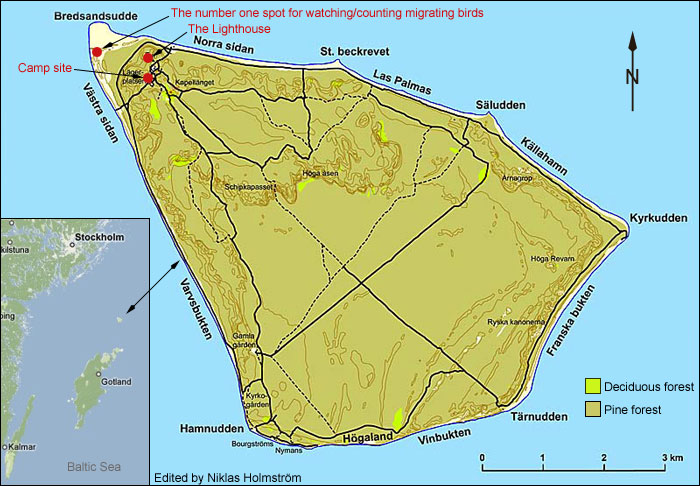 |
|
As said before, I was only 13 year old when I visited Gotska Sandön
for the first time in late May 1976, along with good birding fellows.
We were young then, and we still keep in touch and birding together,
now and then. I fell in love with the island and visited her again
in May 1977 and 1978. And then there was a gap of more than 30 years
until the visit in May 2009. On this visit we were several birders
from Sweden, but I travelled with my good old mates Classe and Janne
Cronlund and Ante Eriksson. In 1976 I was there along with Classe
and a few others and in 1978 I was there with Janne. In those ancient
days one reached Gotska Sandön by fishing-boat from Fårö
(Gotland). However, many birders were still present at our arrival:
Mattias Gerdin, David Lundgren, Raul Vicente, Per och Micke Åsberg,
Jörgen Hansson, Martin Widén, Krister Nordin and Tord
Lantz. A small happy family, so to speak. Here you'll find photo
galleries from 2009
and 2010.
Highlights during the stay: Greater Short-toed Lark, Citrine
Wagtail, Common Quail, Pale-bellied Brant Goose, Greenish Warbler,
several Red-breasted Flycatchers, Collared Flycatcher, many Marsh
Warblers, White-tailed Eagle and Golden Eagle. In addition also
a flock of five migrating Red-necked Phalaropes and 140 beautiful
Grey Plovers in one single flock. A total of 116 bird species were
seen. And as usual the weather were just hot and pleasant.
Short facts about the National Park Gotska Sandön: Gotska
Sandön is the most isolated island in the territorial waters
of Sweden and the entire Baltic Sea. It is remote, desolate and
barren, but at the same time strangely beautiful. With its miles
of sandy beaches, its dense pine forest, and broad horizons in every
direction, Gotska Sandön is a very special place that has fascinated
visitors for centuries.
Sights: Deserted sandy beaches. Characteristic landscape
featuring sand dunes and pine forest. Dead forest at Arnagrop. Rich
flora. Bird migration route. Unusual beetles. Buildings of cultural
interest.
Area: 4,490 hectares, of which 842 hectares are water.
As National Park: Established in 1909, extended in 1963 and
1988.
Location: In the middle of the Baltic Sea 38 kilometres north
of Fårö (Gotland) and 85 kilometres south-east of Landsort
(Stockholm's archipelago).
Visiting Gotska Sandön: There are regular boat tours
from Fårö Island and Nynäshamn on the mainland during
mid May to mid September. The island has no harbour. Visitors may
choose to dwell in their own tents or in a cabin. Lodging facilties
must be reserved in advance. At the lighthouse compound, the Swedish
Environmental Protection Agency has provided a nature centre with
an exhibit of the island's natural and human history.
Getting there: You will find everything about travel, schedule,
prices and so on concerning Gotska Sandön on the english subsection
at www.gotskasandon.se/index1.html,
where you can make bookings as well.
Web resources:
Birds on Gotska
Sandön managed by Bertil Johanson (of course available
in Swedish language too)
Gotska Sandön
– Högpotent raritetsö. An article by Måns
Grundsten, published in the birding magazine Roadrunner (4/2006).
In Swedish language only.
|
| |
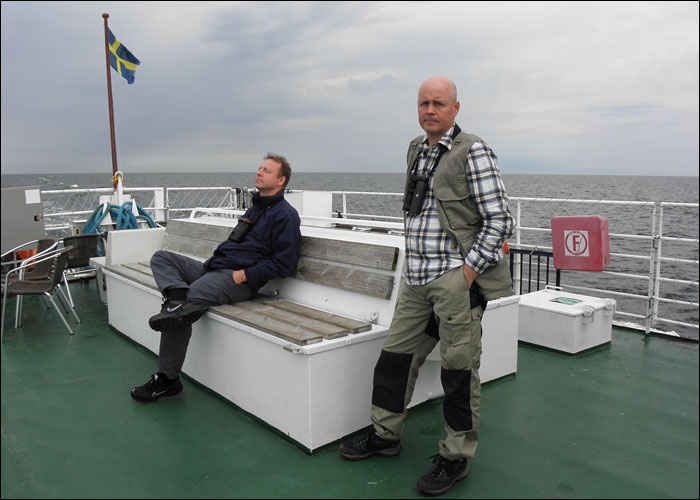 |
Leaving Nynäshamn in early morning.
Hopefully the ominous clouds will too. The Cronlund brothers (Janne
and Classe).
 |
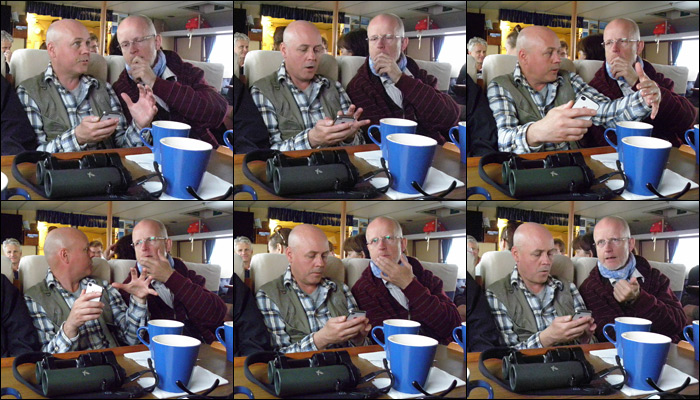 |
The boat crossing takes about five hours
and if you're not prone to seasickness one could just chill down in
the cabin. Classe and Bertil are totally absorbed within a seemingly
hot topic or perhaps an app. About what? Only your imagination set
the limit;-)
 |
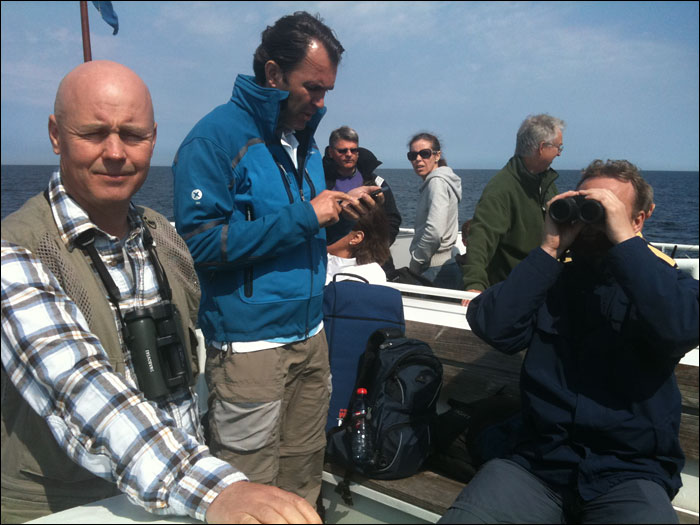 |
Halfway to Gotska Sandön the clouds
suddenly decreased and soon...
 |
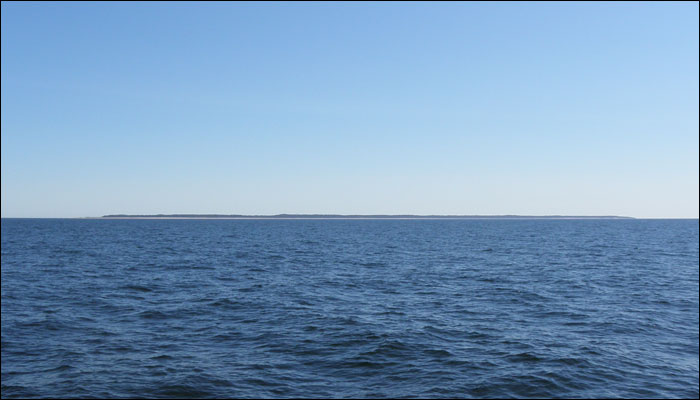 |
...the jewel among islands did approach
in the horizon.
 |
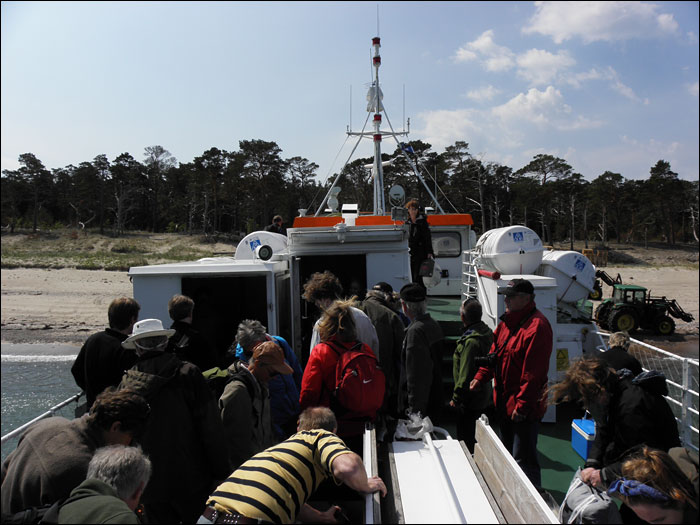 |
As usual everyone want to get off as quickly
as possible. However, it's quite funny to stay back and just watch.
Why such a hurry?
 |
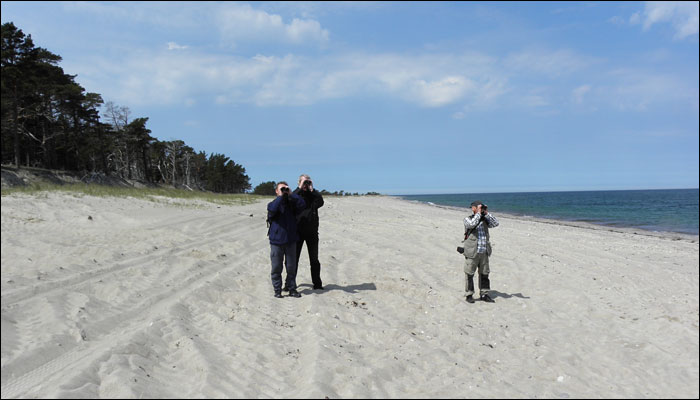 |
Janne, Ante and Classe on the beach named
Las Palmas. Yes, it's true. And I can reveal that Classe and I once
wrote a song about this very beach. However, I only remember the chorus,
Las Palmas ta ta dadado katosch!
 |
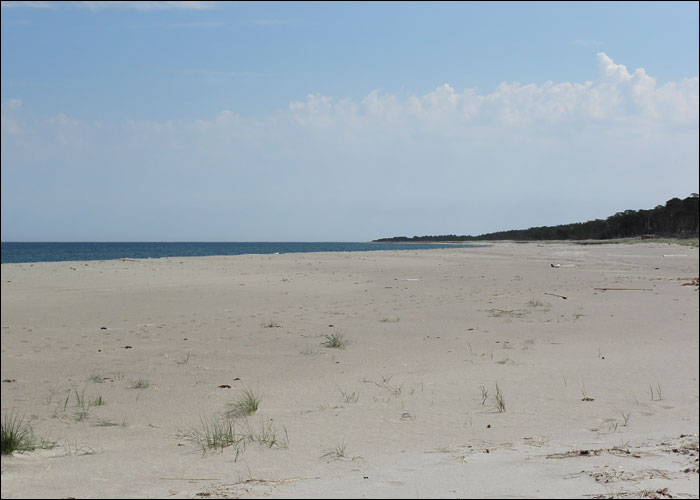 |
Beach of Las Palmas towards Säludden.
 |
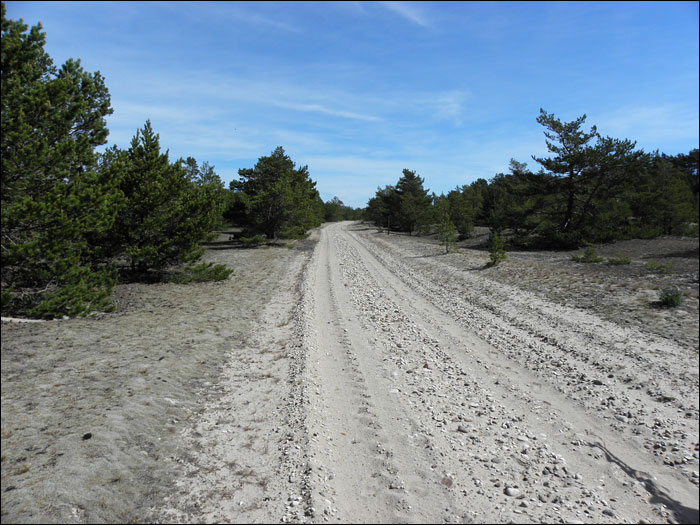 |
The closest you get to a road. Typical
biotope between the shore and woodland along the eastern part.
 |
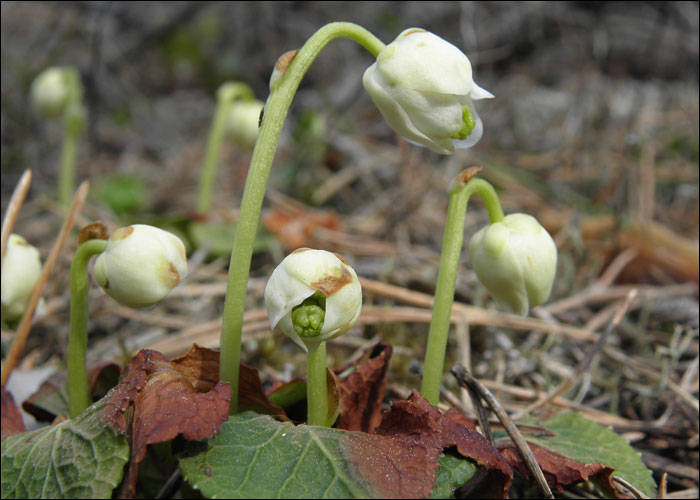 |
One-flowered Wintergreen (Ögonpyrola
in Swedish) found at Las Palmas. A very tiny little flower.
 |
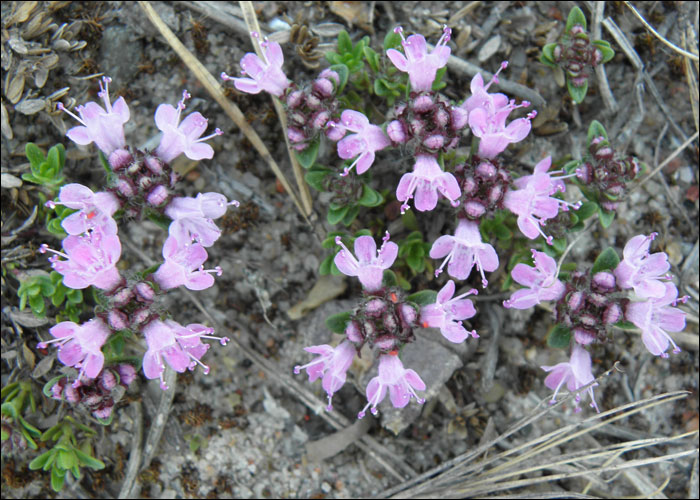 |
Breckland Thyme (Backtimjan) is quite common.
 |
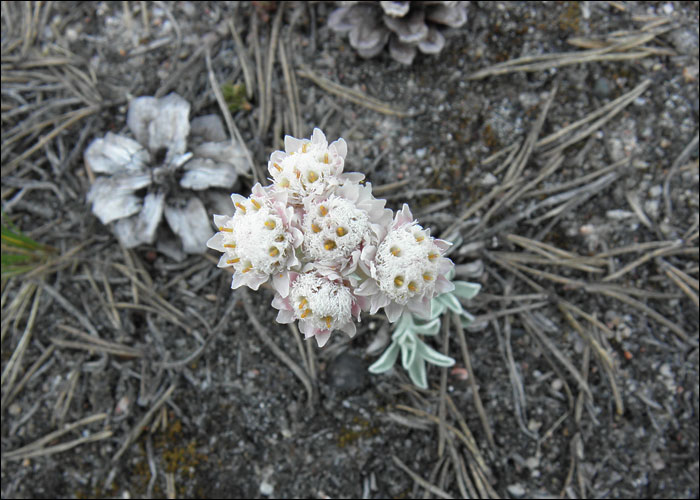 |
Mountain Everlasting (Kattfot). A little
soft and beautiful flower and I much prefer the Swedish name.
 |
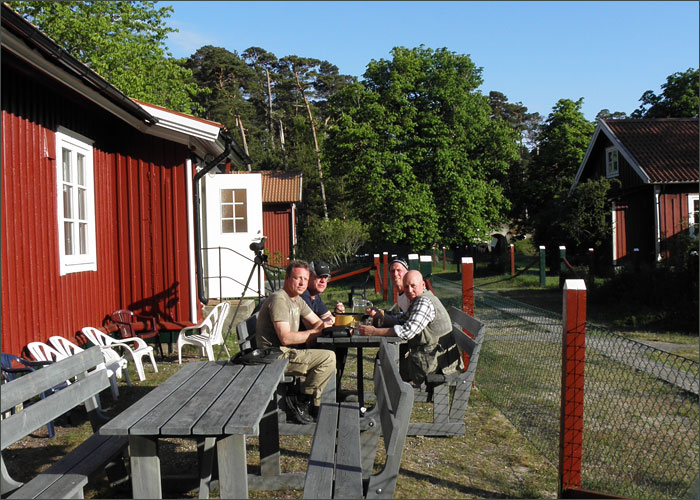 |
Dinner in the evening outside our nice
house in the lighthouse village (Fyrbyn). Janne, Ante, Classe and
Nicke.
 |
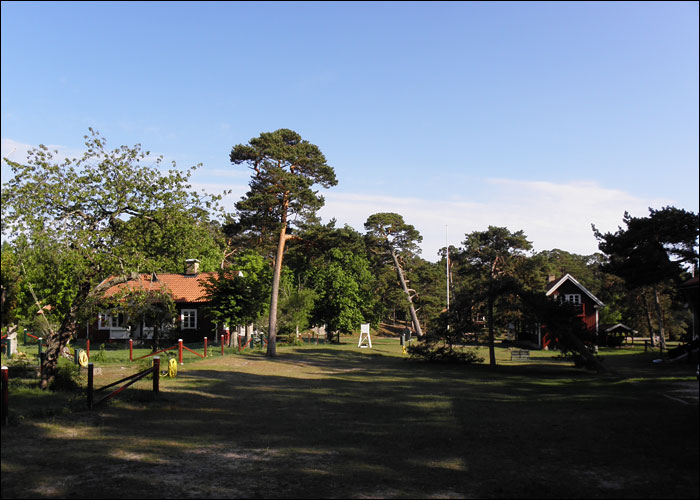 |
Part of the small and beautiful village
Fyrbyn.
 |
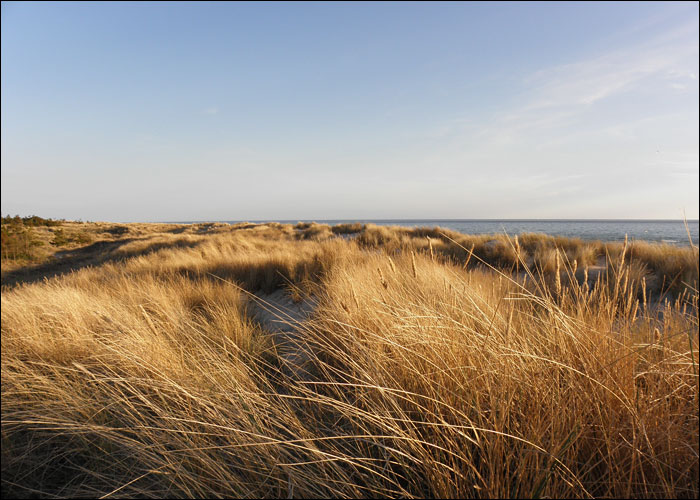 |
The northern tip Bredsand udde in soft
evening light. What a magnificent and soothing place!
 |
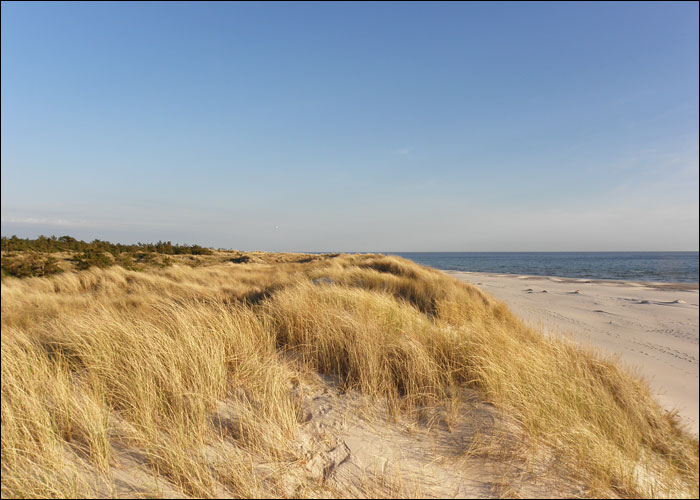 |
Part of Bredsands udde.
 |
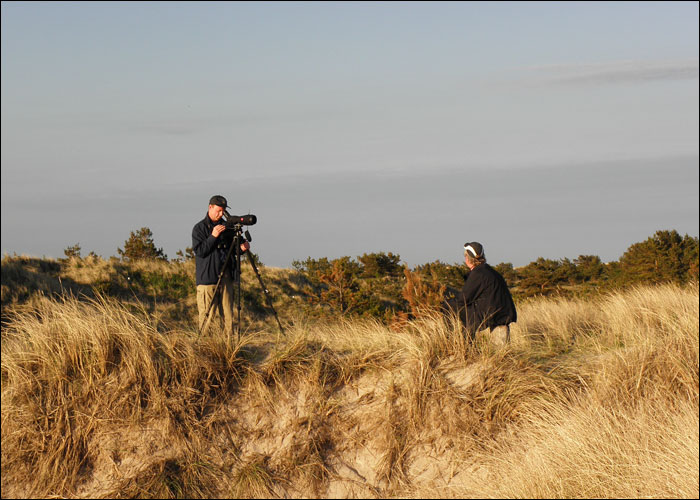 |
Janne and Ante at Bredsands udde.
 |
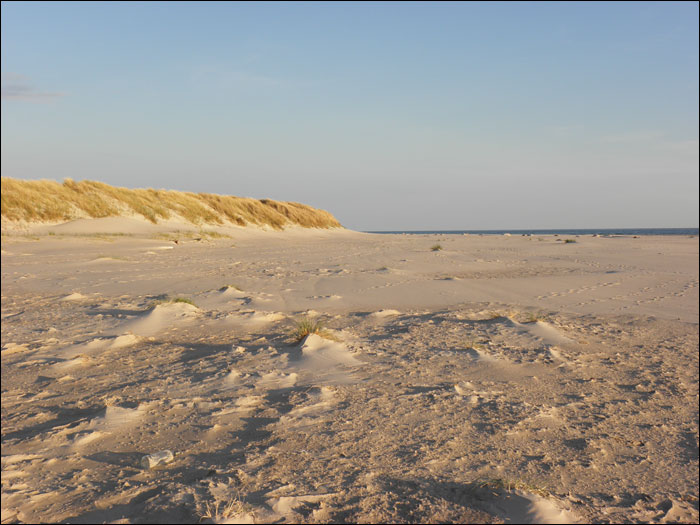 |
The sandy tip of Bredsands udde. Almost
as white as snow!
 |
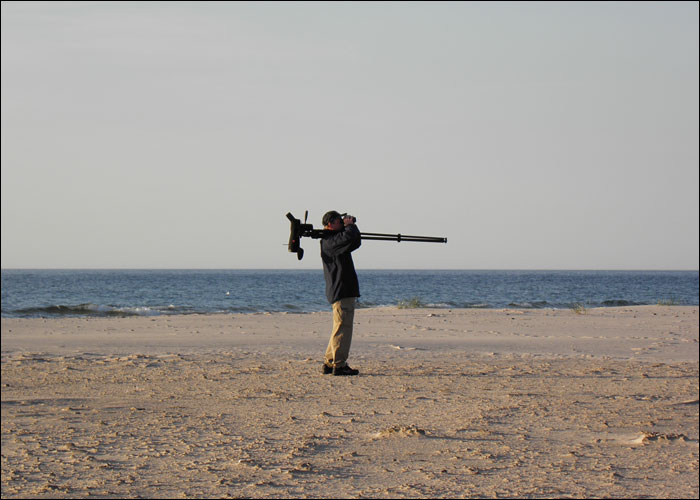 |
| Janne scanning the shoreline at Bredsands
udde... |
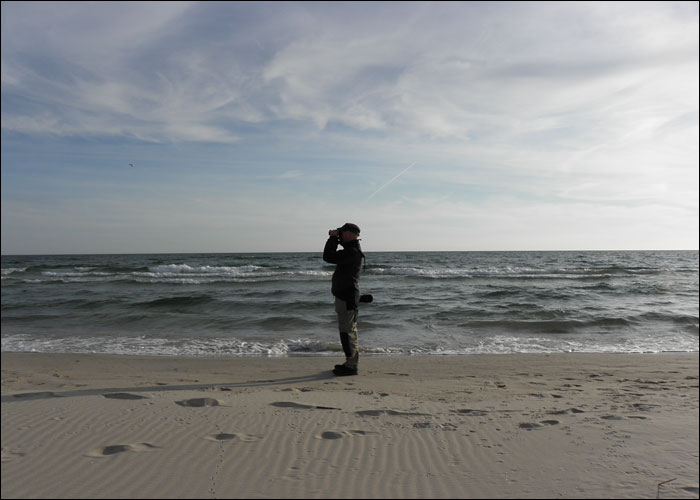 |
| ...while Classe checking the western shoreline... |
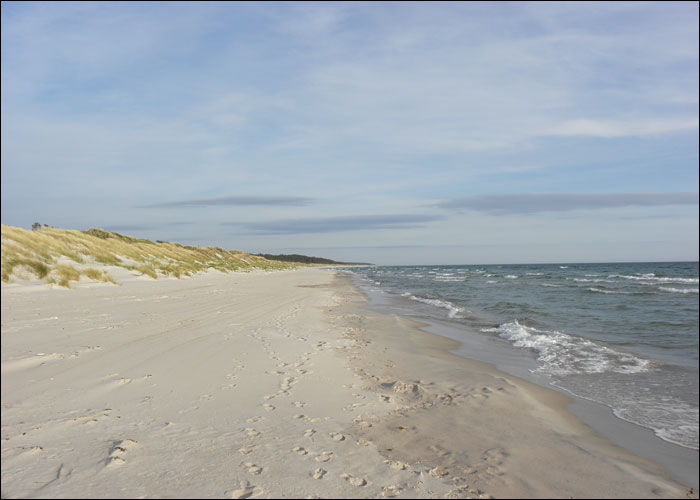 |
...towards Varvsbukten.
 |
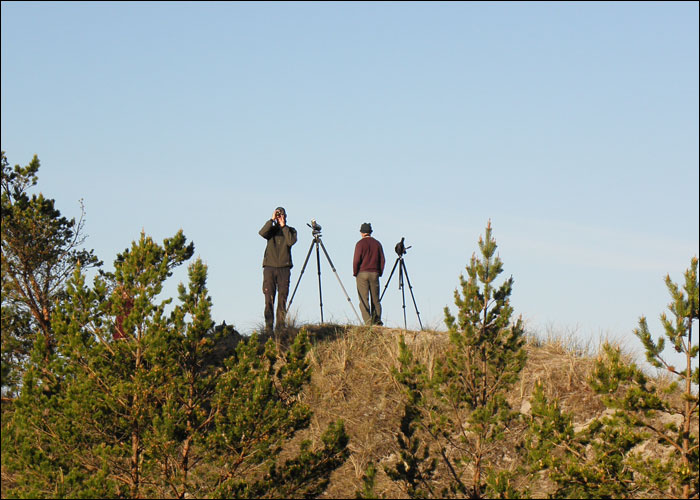 |
Matte (Gerdin) working hard while Ralle
(Vicente) playing air-bass in his pockets or whatever.
 |
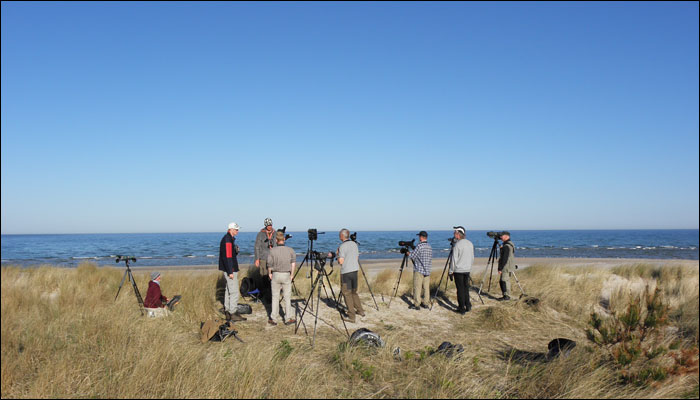 |
Every morning starts at Bredsands udde,
even though it's quite calm for passing migrates in the beginning
of June. From left: Bertil Johansson (sitting), Micke and Per Åsberg,
Martin Widén, Jörgen Hansson, Janne, Ante and Classe.
 |
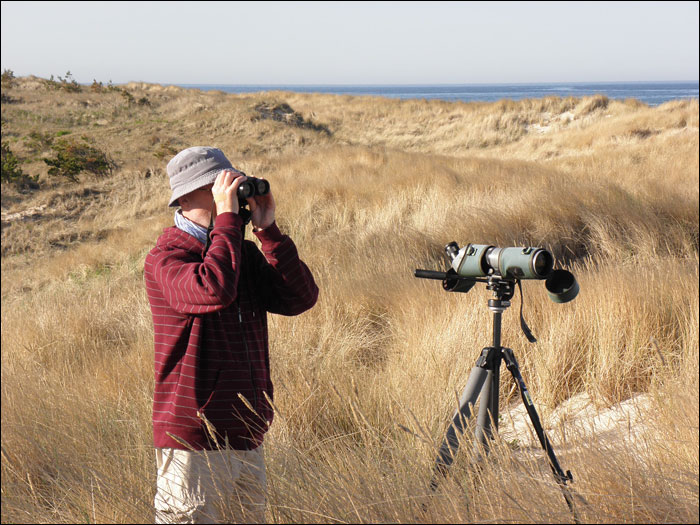 |
The Godfather of Gotska Sandön. Bertil.
 |
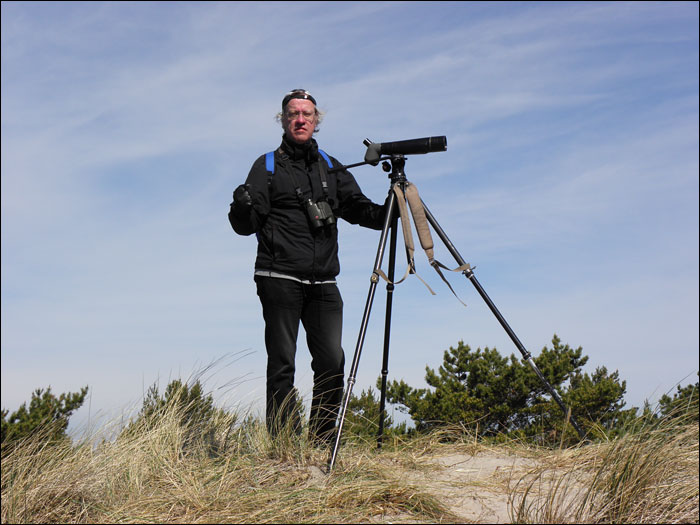 |
A hard firts-time visitor. Ante. The man,
myth and legend from Jakan.
 |
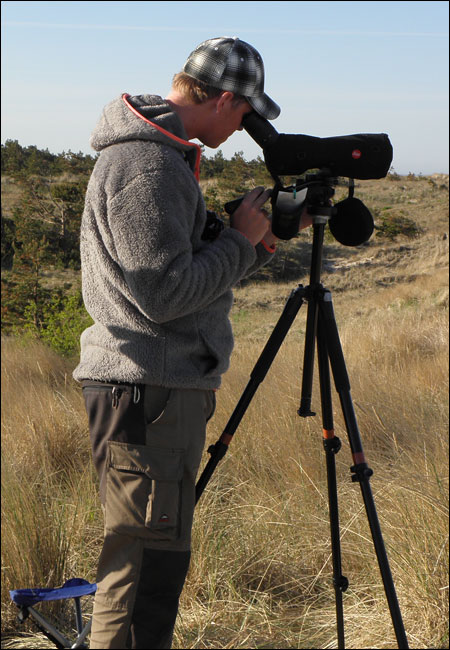 |
Per Åsberg in action.
 |
|
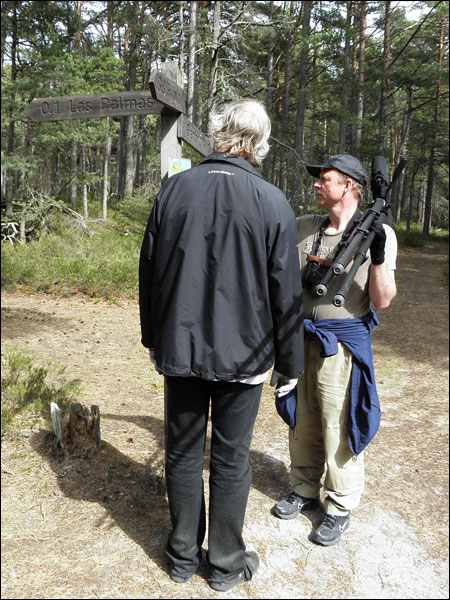 |
So, where are we heading? Las Palmas
or the Bay of Wine? Some decision anxiety.
 |
|
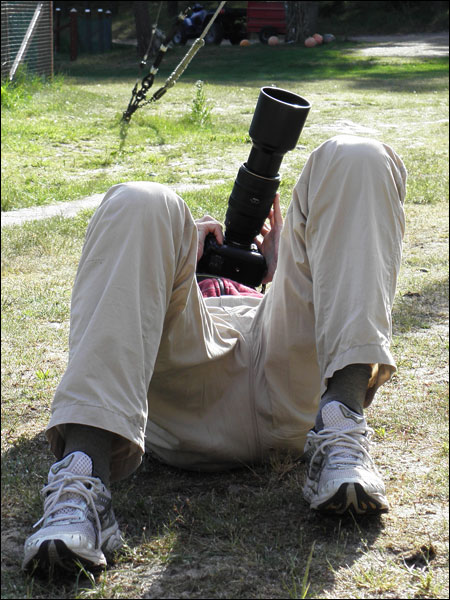 |
Bertil showing his heavy equipment
trying to get some shots of passing swifts.
 |
|
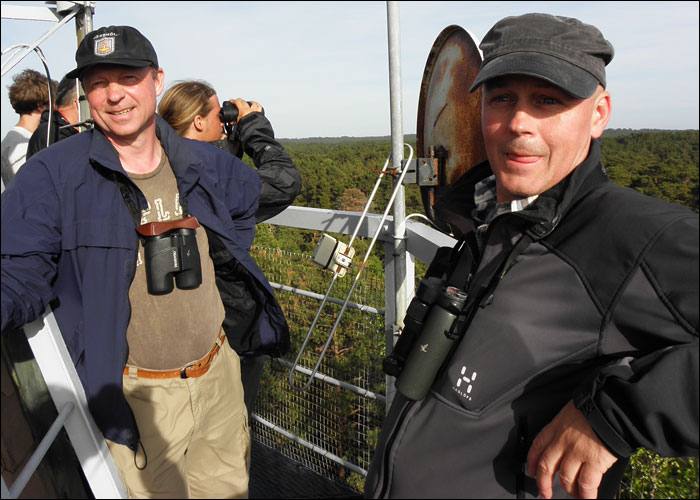 |
At the top of the lighthouse. The view
were just awesome. The Cronlund brothers enjoying the sight while
Ralle scanning the air for raptors.
 |
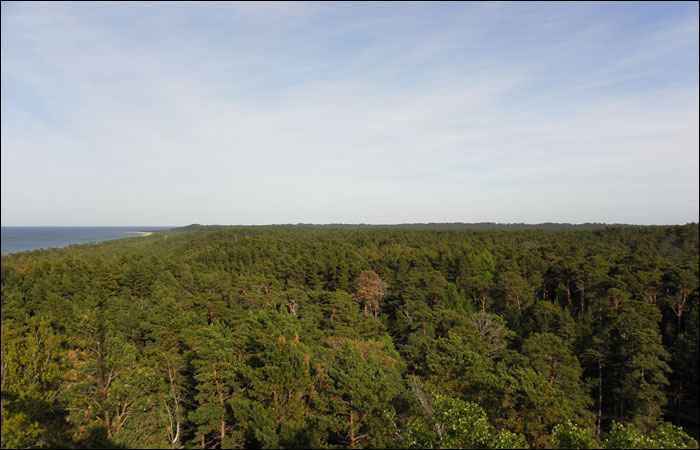 |
View from the top of the lighthouse towards
east.
 |
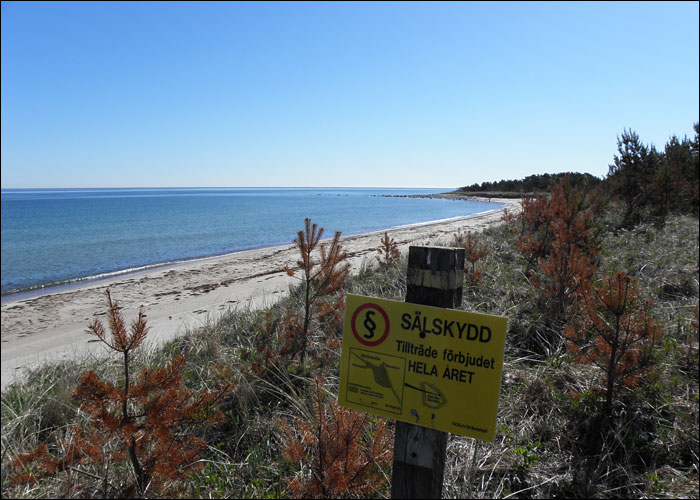 |
Säludden (Cape Seal) are protected
year-round cause the Grey Seals.
 |
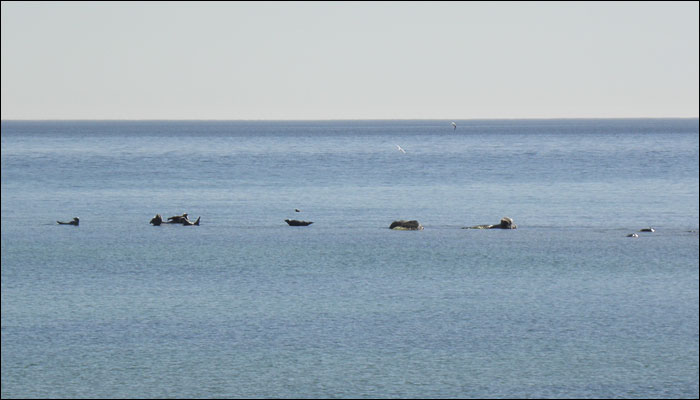 |
Several Grey Seals resting on offshore
cliffs. Very nice to watch and here them howling!
 |
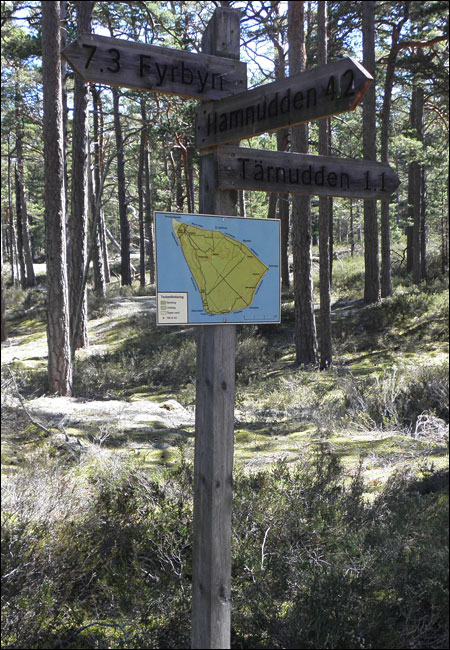 |
No risk to lose one's way, if you
keep to the paths. I heading to Tärnudden, the southernmost
tip of the island.
 |
|
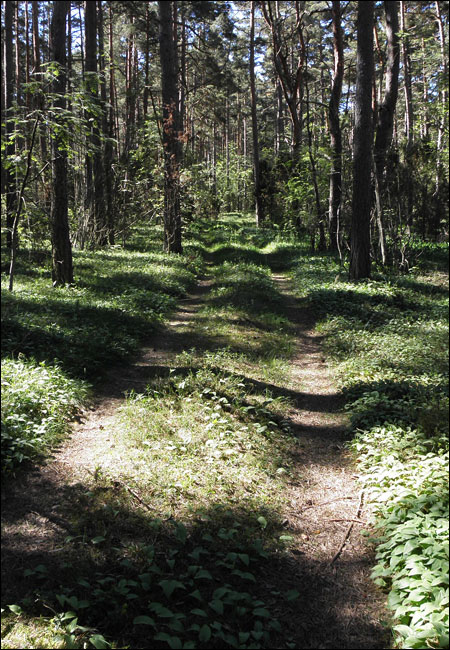 |
All the paths through the island
is very beautiful. Not much birds, but the scent and the silent
filled by natural sounds are so relaxing for one's soul.
 |
|
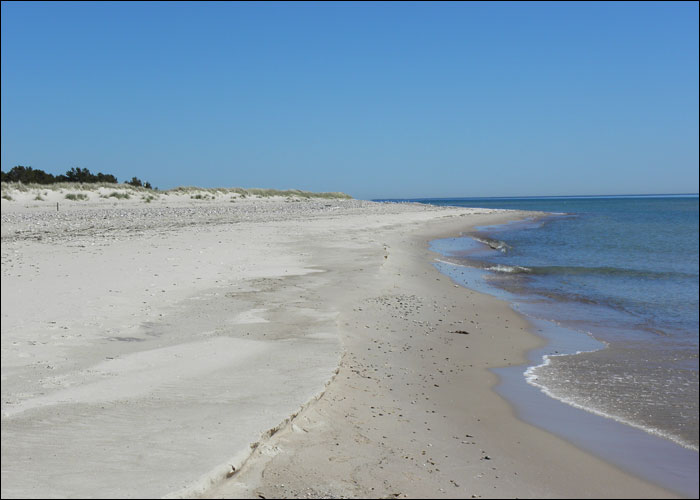 |
The remote beach of Tärnudden.
 |
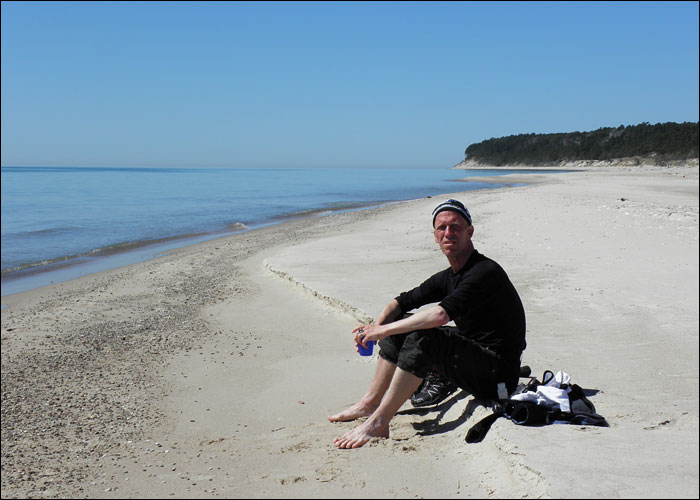 |
Nicke taking a break at Tärnudden,
with Höga land in background. This is paradise!
 |
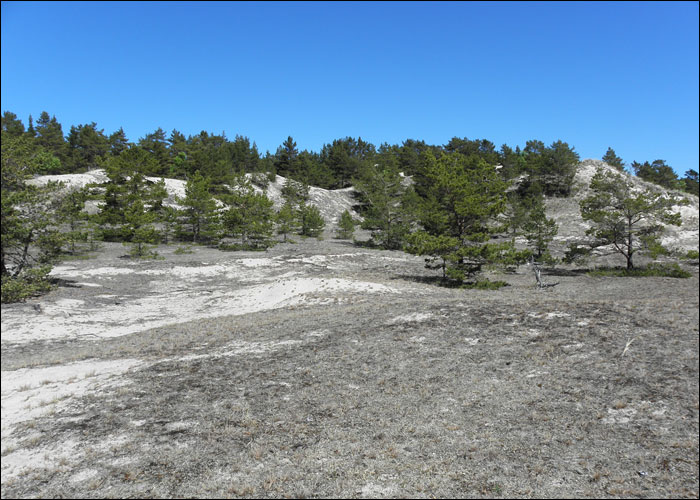 |
| Dry and sandy landscape at Vinbukten... |
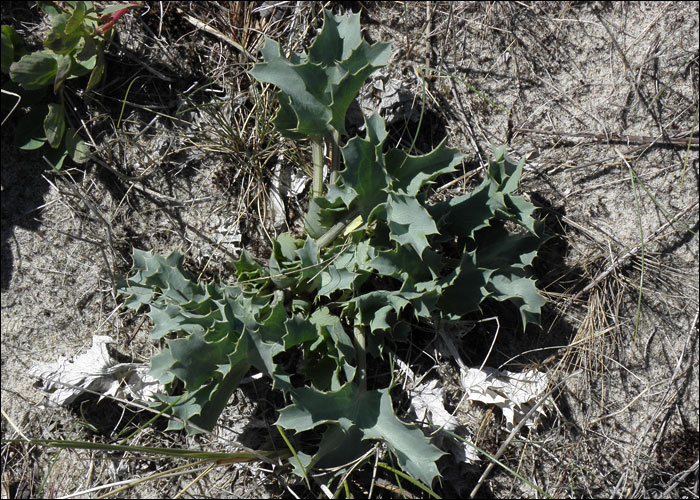 |
...which is the only place on the island
were Sea-holly (Martorn) is growing.
 |
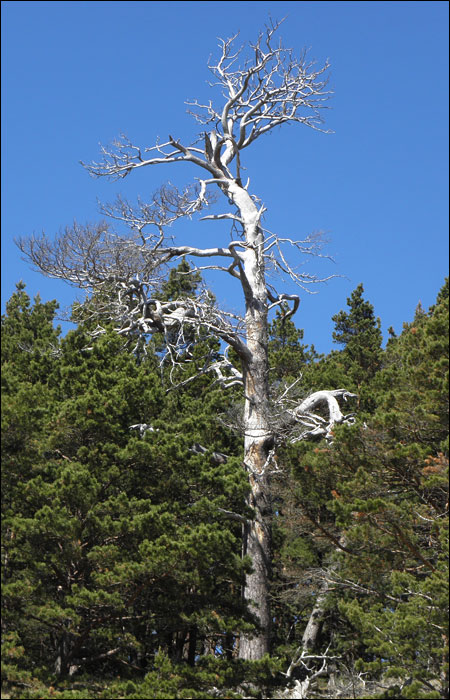 |
A wonderful silvery tree at Höga
land!
 |
|
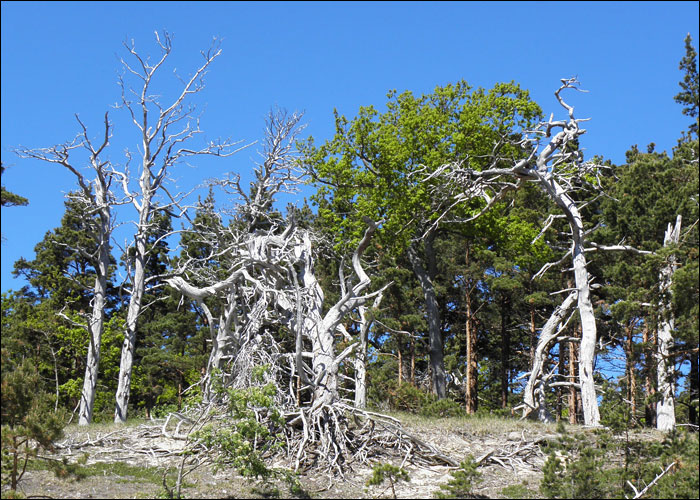 |
More silvery trees, at Källahamn.
Like a frozen moment of a tree ballet.
 |
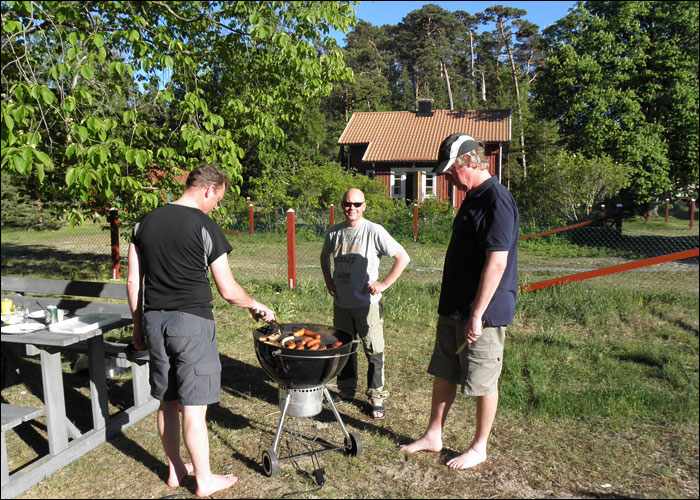 |
Three cool birders having a barbecue.
 |
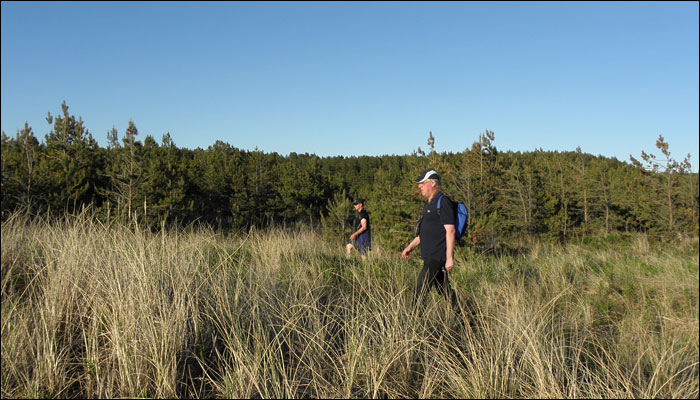 |
Janne and Ante working as drivers in search
for a River Warbler, which were present in the area earlier that day.
Though we had no luck, but who cares when the island offer beautiful
evening views...
|
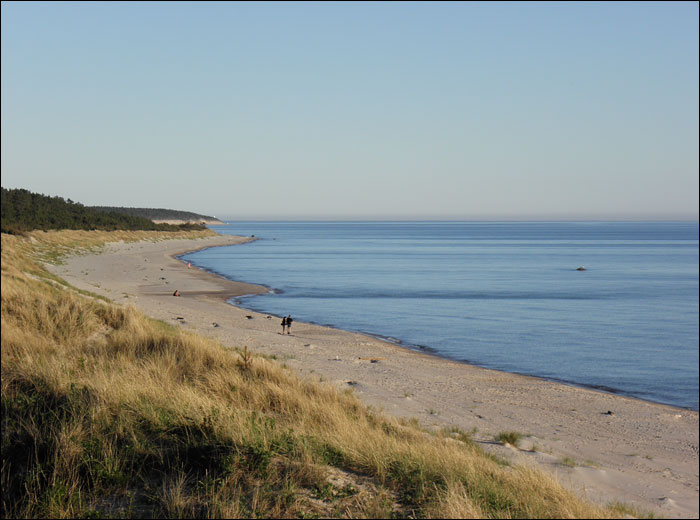 |
...like this one towards Hamnudden. No
words needed.
 |
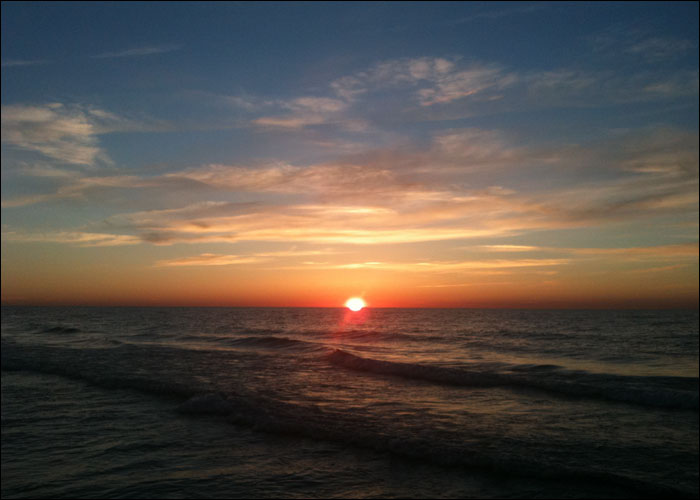 |
Sunset at Bredsands udde. Our last evening
on the island.
 |
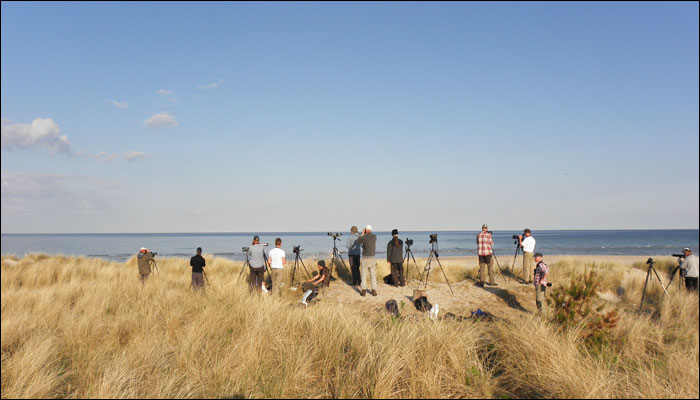 |
| Crowded at Bredsands udde on our last morning.
Imagine
my surprise when I got down the small hill to have a pee... |
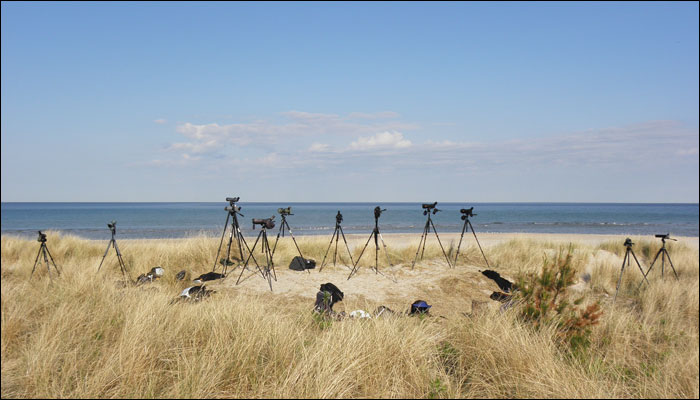 |
| ...and when I got up again everyone was
fucking gone. A quick close-to-nervous-breakdown-scan and I happily
found the party... |
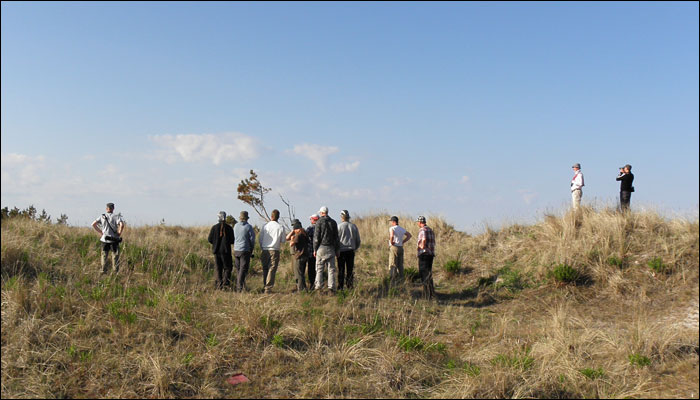 |
| ...a few hills away, discussing the strategy
to successfully flush a Quail that had dropped somewhere in the vegetation... |
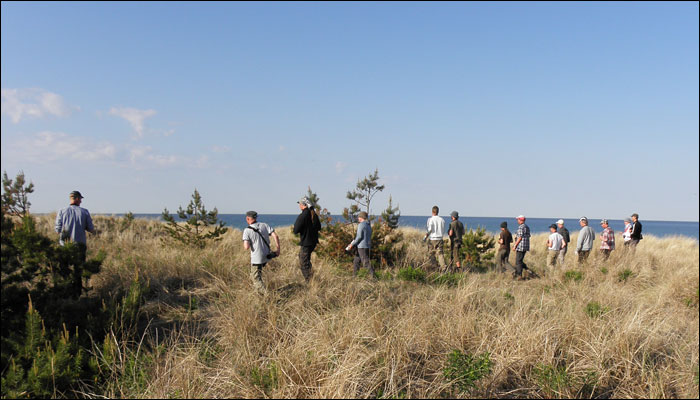 |
...and this is how target-oriented birders
find difficult-to-see birds. And of course the little Quail were flushed
and everyone was happy indeed. Sometimes it's more funny to watch
birders in their way of birding, than the bird itself :-)
 |
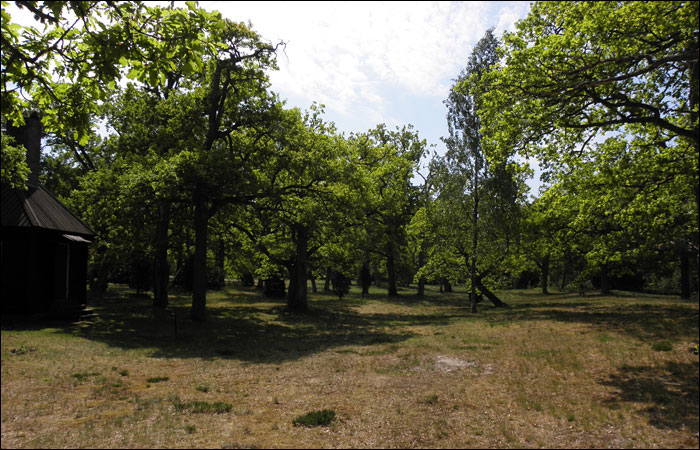 |
Kapellänget. An oasis of old oaks
and flowering Pasque flowers.
 |
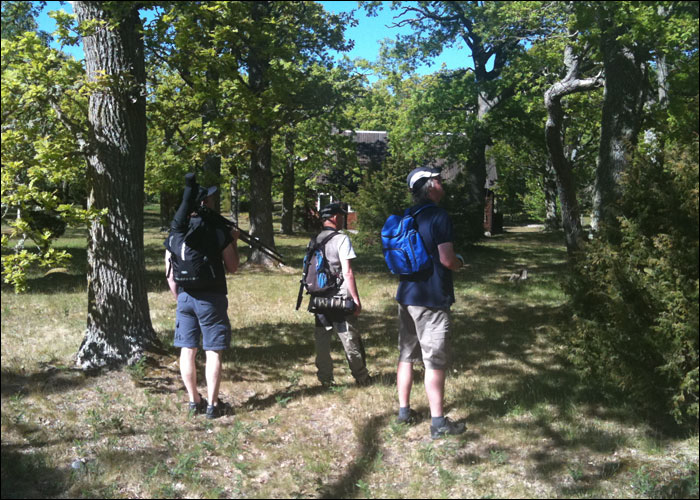 |
Janne, Classe and Ante at Kapellänget.
 |
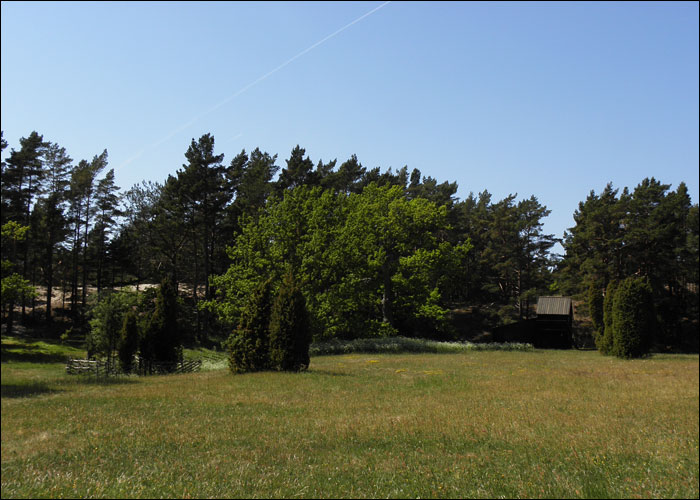 |
Gamla gården on the southern part.
 |
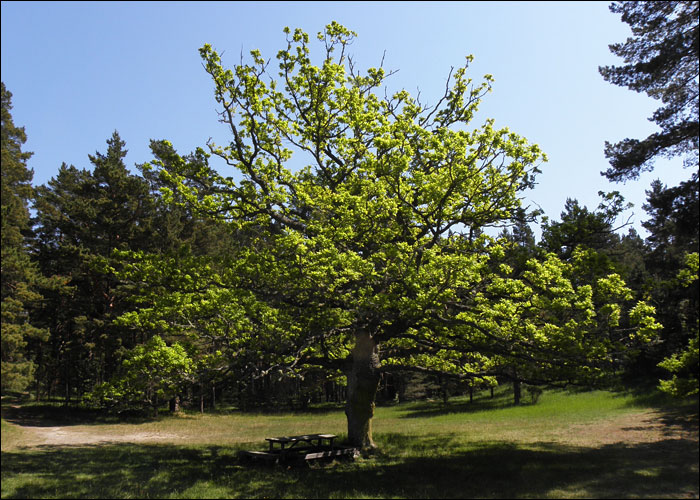 |
A contemplative place.
 |
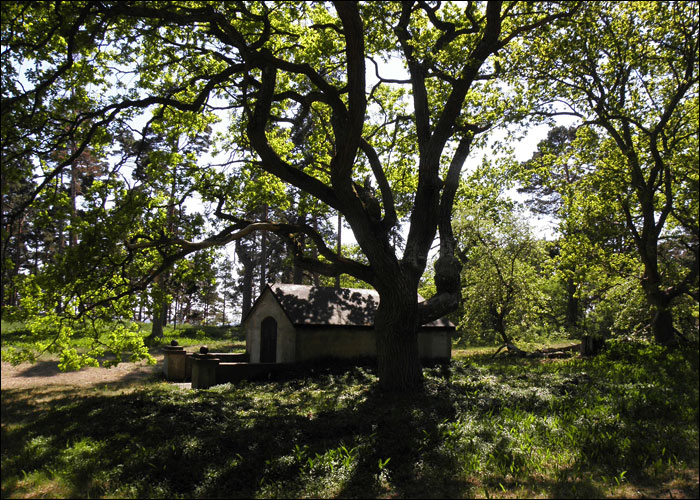 |
Bourgströms mausoleum on the southernmost
part.
 |
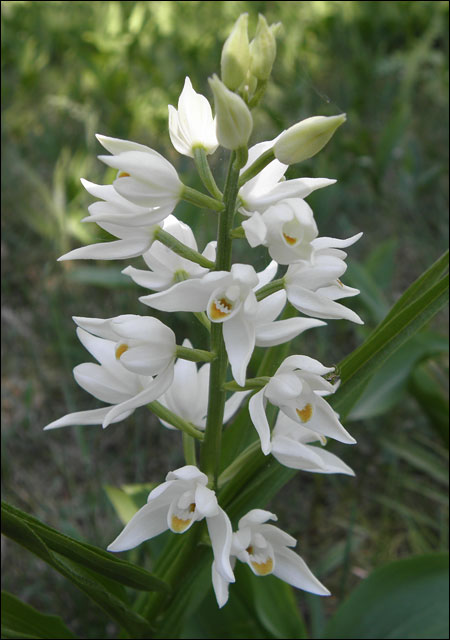 |
A lovely Narrow-leaved Helleborine
(Vit skogslilja) at Bourgströms mausoleum.
 |
|
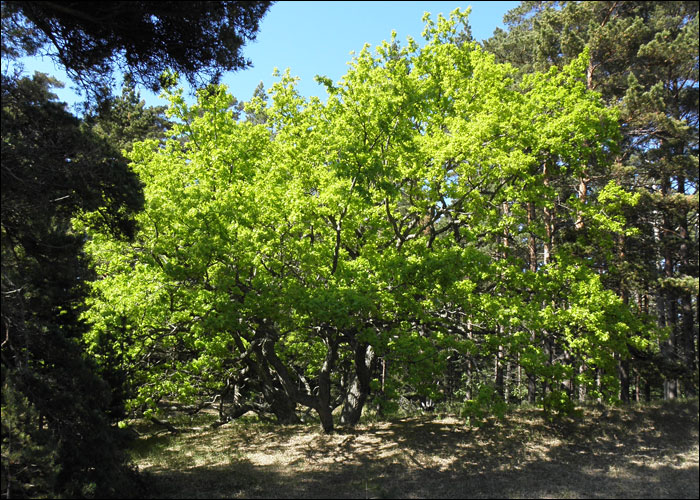 |
The Oak. This is the well-known oak named
Eken. half-buried by sand on the southern part.
 |
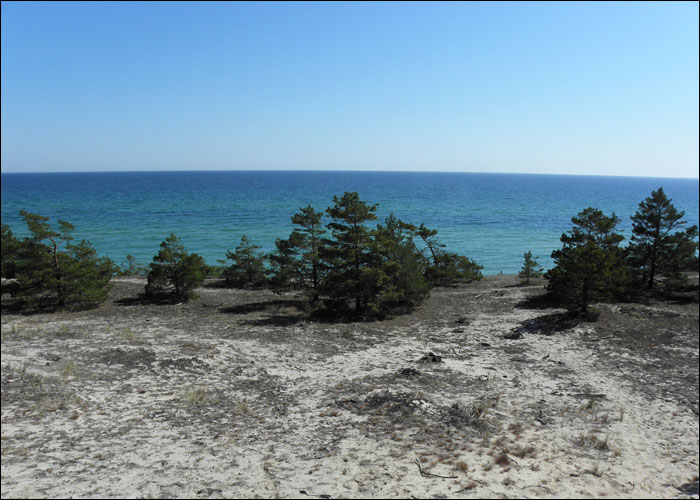 |
View at Höga land.
 |
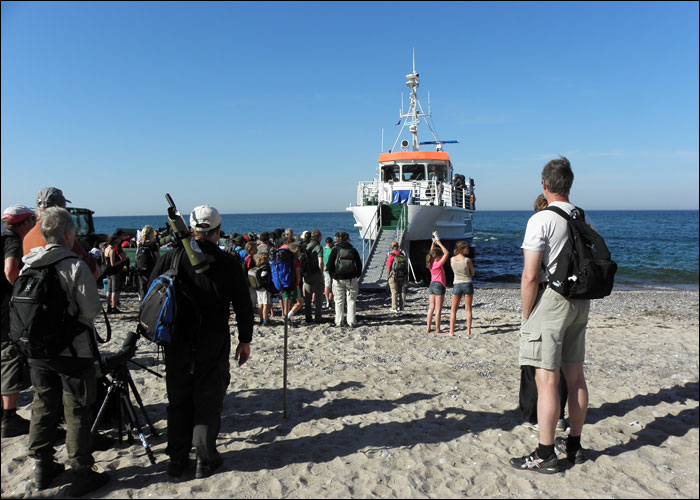 |
| Time to leave the beautiful and soothing
island. Sadly, sort of. However, everyone longed for a nice dinner
onboard, but that's another story. See you at Gotska next year! |
























































